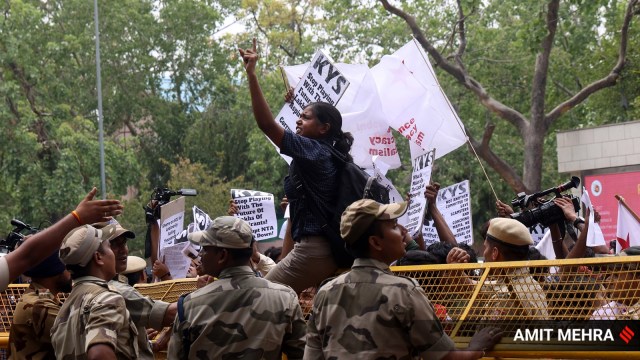
Written by Suresh Prabhu and Shobhit Mathur
Every summer sees an onslaught of competitive examinations in India, unlike anywhere else in the world. Millions of anxious students, their minds conditioned by years of coaching class regimens, accompanied by nervous parents, descend on designated test centres to undertake make-or-break examinations. The systemic strain of administering such gargantuan single-day tests, which shape the lives of millions, is immense. Despite the best efforts of testing agencies, errors occur, with the result that the people of India are losing trust in the testing process. There is public outcry and litigation every year and, ironically, the coaching industry becomes the saviour of the students. It is time that we reimagine the design of competitive exams in India. We need to look at the established models globally and apply them to the Indian context. The need of the hour is a two-phase, on-demand computer-based admission test. It can simultaneously be designed to be a win for the students and a loss for the coaching industry.
The GRE example
Let’s begin with how the content of the test should be prepared. Creating a standardised test at scale for India necessitates a comprehensive development life-cycle overseen by educational experts. Definitive test objectives aligned to undergraduate or graduate admissions criteria must be outlined initially and publicly declared. The content itself — with the questions undergoing various reviews — must be authored by a carefully vetted panel of subject matter experts (SMEs) to ensure representation of the mandated skill sets. The list of these SMEs should be released to build public trust and also appreciate the service of the contributors. Structured protocols for editing, pretesting, statistical analysis using advanced psychometric techniques, like item response theory, should constitute the qualification pipeline. Only questions empirically gauged for clarity, relevance, and fairness should get inducted into operational test forms assembled through equating procedures — a gold standard that tests like the GRE have perfected over decades. A sample of these questions should be released as official guides and official mock tests to the public to build confidence and reduce the role of coaching centres. A large enough pool of such questions needs to be compiled to allow administering of tests without repetition of questions. For example, for preparing the pool of questions for NEET, about 1,000 selected SMEs can contribute 500 questions each. If 80 per cent of these questions get shortlisted from each SME after review, a pool of 400,000 questions is ready in the first year. This pool can be enhanced with more questions added to it each year.
The first phase of the exam would serve as an initial screening that is open year-round at designated computerised test centres nationwide. The test for each test taker is randomly created on demand from the curated pool of questions. For example, in the current format of NEET, 200 questions will be randomly chosen, curating the test for each candidate from the available pool of 400,000 questions mentioned earlier. Since the test is individualised and randomised, there is no chance of a “paper leak”. Candidates could take this computer-delivered assessment multiple times at their convenience rather than according to a rigid annual schedule. By distributing the load seamlessly over 12 months, this phase eliminates the logistical bottlenecks currently straining test centres. Moreover, it enhances accessibility — students who wish to repeat the test can take it all year round. They can make better decisions regarding their futures, based on the outcomes of the first phase test. This also reduces the role of coaching outfits that thrive on encouraging test repetition and charging coaching fees for preparation. The top scorers, specifically those within a predetermined multiple of available seats, would then qualify for the second secure phase. For example, five times the number of seats available can be shortlisted for the second phase.
AI as an aid
Conducted one time annually under proctored conditions, Phase 2 allows for extensive screening of this winnowed cohort with comprehensive fraud prevention measures at the test centres. Phase 2 of the test will be designed in a similar fashion as Phase 1. With AI-based proctoring getting better each day, it should be deployed to increase scrutiny of the testing centres. This proposed two-tier process reduces stress on the students by allowing multiple Phase 1 attempts aligned with individual academic trajectories. It also disincentivises the excessive money spent annually on coaching classes — money and time that can be better deployed towards strengthening mainstream schooling and developing a broader skill set in the formative years.
By embracing this model and adapting it to specific tests, India can solve its current competitive examination woes. This would optimise the national talent pipeline. It reduces stress on the students, reduces the stigma of failure and saves precious time and money that can be employed to better use. It eliminates systemic pain points while enhancing standardisation and trust — pillars of a truly robust testing ecosystem. As the nation with the world’s largest youth demographic aiming to be a global power, such a reformation of the competitive exam system is no longer just an option, but an imperative.
Prabhu is a former Union Minister for Civil Aviation, Railways, Commerce & Industry. Mathur is Vice Chancellor, Rishihood University
© The Indian Express Pvt Ltd
First uploaded on: 23-06-2024 at 12:40 IST


